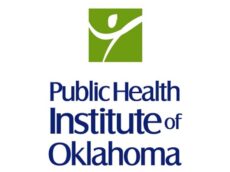
OPIPH Poster:
Oral health disparities, attitudes, and solutions for American Indian/Alaska Native populations in Oklahoma
Authors

Alexandria Holt, MPH
Alexandria is a Public Health Specialist from Harrah, OK. She has a bachelor’s degree from the University of Oklahoma in Anthropology: Human Health and Biology and a Master of Public Health in Epidemiology from the University of Oklahoma Health Sciences Center.

Amanda Llaneza, MPH
Amanda J. Llaneza is a PhD student in Epidemiology at the University of Oklahoma Health Sciences Center and a research assistant under the Native Oral Health Network, the oral health program at the Southern Plains Tribal Health Board and Oklahoma Area Tribal Epidemiology Center. She is also a research manager at the Oklahoma Medical Research Foundation. Ms. Llaneza received her Master of Public Health degree in Epidemiology from the New York University College of Global Public Health. She focuses her research on oral health, chronic disorders and health disparities using quantitative and qualitative research methodologies.

Julie Seward, RDH, MEd
Julie is a Registered Dental Hygienist from Checotah, OK and a citizen of the Cherokee Nation. Cumulatively, she has over 20 years of oral health experience in clinical, academic, and public health sectors. At the Southern Plains Tribal Health Board, Julie manages the Native Oral Health Network, serves as the Program Coordinator for the Oklahoma Shared Clinical and Translation Resources grant, and is the Vice-Chair for the Oklahoma Oral Health Coalition.

BACKGROUND/OBJECTIVES: Major oral health disparities persist among American Indians/Alaska Natives (AI/AN) in Oklahoma. Two projects were conducted, an oral health report and an online survey, with the overall goal to highlight and amplify the social justice and health equity issues seen among this population. The objectives for these projects were to review the current oral health data for this population, understand attitudes towards oral health and healthcare providers, and provide possible solutions to address disparities seen in this population. METHODS: The most current data were collected from the Indian Health Service (IHS), Centers for Disease Control and Prevention, American Dental Association, National Health and Nutrition Examination Survey, and peer-reviewed sources on access to care and oral health outcomes for AI/AN and general U.S. populations and were analyzed in the oral health report. Primary data was also collected utilizing a cross-sectional study design to quantitatively and qualitatively evaluate the major oral health concerns, potential solutions to improve oral health in Oklahoma, including, but not limited to, an expanded dental workforce. RESULTS: Main oral health outcomes examined for the oral health report were decay experience, untreated decay, and dental sealants. AI/AN adults over 35 and children ages 6-9 and 13-15 have worse oral health outcomes compared to the general U.S. population. Children ages 1-5 have lower percentages of dental caries experience compared to the general population but have higher percentages of other poor oral health outcomes. Qualitative data from the survey on attitudes towards oral healthcare among adult rural (n=201) participants were examined. Through open-ended responses, participants gave a considerable amount of insight into the major concerns related to oral health and improving oral health overall in Oklahoma. Participants also revealed attitudes and experiences toward dental therapy as a solution to workforce shortages. CONCLUSIONS: Oral health disparities persist among the AI/AN population of Oklahoma. Expanding the dental workforce is a potential solution towards oral health equity. PUBLIC HEALTH IMPLICATIONS: Understanding community members’ and consumer attitudes towards access to oral health services and continued education is consequential in addressing oral health disparities.
QUESTIONS/COMMENTS FOR THE AUTHORS
We look forward to hearing from you. Please send an email by clicking the button below.
Email